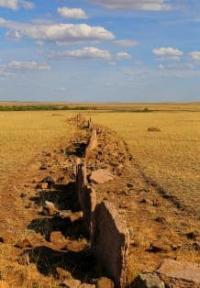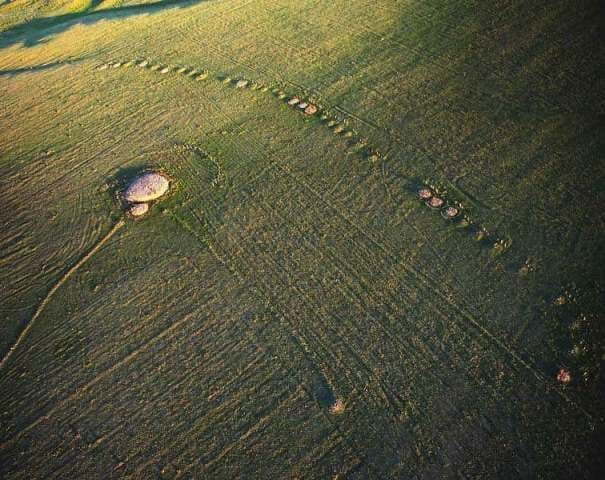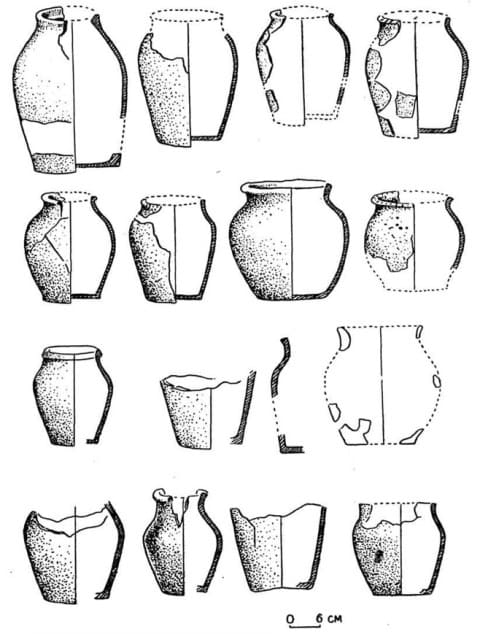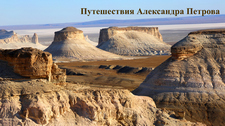You are here
Tasmola culture.


Early Iron Age of Central Kazakhstan.
"The ancient history of Central Kazakhstan remained unexplored for a long time. Fragmentary information from ancient writers and authors of the early Middle Ages does not reveal the history of this vast country. Even in the works of medieval writers, from Wilhelm Rubruck to Abulgaei Bahadur, it is difficult to find any data on the history of Central Kazakhstan. The only and very important source for writing ancient history, and especially the history of the unwritten period of Sary-Arka, are archaeological sites, the study of which will allow us to recreate the historical appearance of this country."
"Ancient Culture of Central Kazakhstan". D. Kh. Margulan. K. A. Akishev, M. K. Kadyrbayev, A. Morazbayev. 1966.
Sources of originality of Tasmola culture in Central Kazakhstan.
In recent years, a complex of monuments has been discovered and studied in Central Kazakhstan, which, together with materials from previous years from other areas of the same territory, has allowed us to form a certain idea of the characteristics of the ethnocultural group that developed in the steppes of Central Kazakhstan during the Saka period.
Specific features of the burial rite and some forms of inventory, characteristic of the main regions of Central Kazakhstan and most clearly manifested in the materials from six burial mound groups of the Tasmola burial ground, made it possible to identify a special archaeological culture in the territory under consideration, which we called Tasmola.
The rationale for the need to identify a local group of monuments in Central Kazakhstan from the general mass of steppe monuments of the Scythian-Saka cultural community, the concept and list of characteristic features of the Tasmola culture will be given after the analysis of the burial rite and inventory.
The study of the Early Iron Age is of particular importance, since it was at that time that a special form of economy was formed - nomadic cattle breeding, which determined the specifics of the historical development of the central regions of Kazakhstan for almost three millennia, and as a result of the major socio-economic, political and cultural events that unfolded, powerful tribal unions arose; the gradual development of iron began in parallel with the further growth of bronze metallurgy; a transition to military democracy took place - the last stage of the decaying primitive communal system.
At the same time, the increased mobility of the ancient population of the Kazakh steppes due to the new form of economy led to the expansion of economic and other ties with neighboring and more distant tribes, states and the creation of common cultural elements and values, in which, it must be assumed, local tribes played an important role.
In the studied era, as in no other, the paths of historical development of the ancient population of Kazakhstan turned out to be closely interconnected and intertwined with the destinies of other tribes inhabiting the vast expanses of the European and Asian steppes.
The Tasmola tribes of Central Kazakhstan, forming a group of related cultures together with the Altai, South Siberian and Semirechye tribes, were distinguished by a certain originality and, it must be assumed, together with them exerted a significant influence on the formation of the cultures of the Scythian West.
The origins of the originality of the Tasmola culture require special study. It should be noted that, judging by some traditions of the burial rite, construction techniques of grave structures and anthropological data, they are associated with the development of tribes in the preceding Begazy-Dandybaev period of the Late Bronze Age.
History of study of Tamsmola culture.
The first brief description and schematic sketch of the plan of the burial mound "with a mustache" was made by local historian L. F. Semenov, who sent a letter to the State Academy of the History of Material Culture in 1927 with a request for scientific advice on unknown monuments of the Akmola District. In 1932, P. S. Rykov discovered and later, together with I. V. Sinitsyn, excavated the first and second groups in the Three Brothers tract in the Kalmyk region.
They also studied a “stone arc” up to 150 meters long, about which local residents “said that it had previously been clearly visible and they considered it a road from the extreme, southeastern large mound, one of the Three Brothers, to one of the extreme mounds in the second group.”
The researchers associated its origin with a ritual. Later, I. V. Sinitsyn came to a similar conclusion. In 1933, one mound “with a mustache” was excavated by an expedition of the State Academy of the History of Material Culture in the Dandybai valley on the Sherubai-Nur River. Under the mound, only traces of a fire were found.
Shortly before the Great Patriotic War, S. V. Kiselev also visited the Karaganda region and recorded a similar burial mound in the Besoba burial ground. Since 1946, the systematic work of the Central Kazakhstan expedition began under the leadership of A. Kh. Margulan, which studied monuments of a large chronological range - from the Neolithic era to the architectural structures of the late Middle Ages.
At the same time, in various regions of Central Kazakhstan, A. Kh. Margulan excavated a series of burial mounds "with a mustache" and determined the boundary of this type of monuments from the "Chingiz Range to the upper reaches of the Tobol River" based on the material available at that time.
The merit of A. Kh. Margulan in the study of the Early Iron Age was that already in those years he put forward the thesis about the existence in Central Kazakhstan of a special type of archaeological monuments that are not found in such quantities anywhere else.
However, despite some success, no material was obtained from the "whiskered" burial mounds. In this regard, these monuments were still considered ritual, cult structures. The main question remained unclear - the dating and cultural affiliation of the "mysterious" burial mounds.
The answer to some questions could already be given by the material of B.N. Zhdanov, who dug the "whiskered" burial mound on the shore of Bolshoye Chebachye Lake in 1930, but his research remained unknown for a long time and therefore did not play the necessary role in clarifying the characteristic values of the culture of the tribes of the northern and central regions of Kazakhstan.
General article on Tasmola culture.
Tasmola culture, archaeological community of the "Scythian-Siberian world". At the early stage (VIIIth – VIIth – VIth centuries BC) from the Southern Urals to the Irtysh River, from the south of the forest-steppe of Western Siberia to the latitude of Lake Balkhash and the foothills of the Tien-Shan; at the late stage (Vth – IIIrd centuries BC) the area contracts in the west, expands in the Ob-Irtysh forest-steppe.
Local groups (cultures) are distinguished, including related ones – in the border area. Identified by M.K. Kadyrbaev in the 1960s; named after the burial mounds in the Tasmola valley (Aktogai district of the Karaganda region). Mounds "with a mustache": under a large embankment in a pit (up to 2.5:1.5 x 2 meters), covered with stone slabs, the corpse is laid out on its back with the head to the north or northwest (in early graves, at the feet - the skulls of a horse, a ram); under a small one - often skeletons of horses or their parts, ceramic vessels, sometimes only traces of fire; to the east of them - 1 - 2 "whiskers" mostly 20 - 200 meters long made of intermittent stone paving.
On the same burial grounds there are mainly burial mounds up to 1 meter high, with a ring of stones under the embankment, often with a ditch. There are burial mounds up to 5 meters high made of adobe blocks on top of a square stone box with a ditch (up to 15 meters) to the east, the walls of which are made of slabs.
They distinguish between warriors (weapons, horse equipment, decorative belts), cult servants (stone altars, mirrors, tattoo kits), and ordinary people (arrowheads, whetstones, knives). Convincing bronze daggers of the Nurmanbet type (with a wavy handle, an oval cross, a mushroom-shaped top), bells; a variant of the Scythian-Siberian animal style (golden figurines of tigers, bronze ibexes, engraved images of a boar and elk, horn buckles in the form of curled up boars, etc.). Settlements of miners and metalworkers.
Cattle breeding (mainly sheep; horses, camels). Since it was formed on the basis of monuments of the Begazy, Dandybay, Kent, Dongal type of vallik ceramics culture with the participation of the forest-steppe cultures of the Trans-Urals, Western and Southern Siberia.
Europeoids with a small admixture of Mongoloidity. A. Z. Beisenov identified the Korgantas stage of the Tasmola culture (IIIrd – Ist centuries BC; burial mounds with sacrificial sections and others) with a number of analogies in the territory of Xinjiang, Mongolia, Altai; according to A.D. Tairov, these are migrants.
The collapse of the Tasmola culture is also associated with migrations in the eastern part of the Sarmatian archaeological cultures, the Yuezhi, Wusun, Huns and others.
Authority:
https://old.bigenc.ru/archeology/text/4183267
"Ancient culture of Central Kazakhstan." D. X. Margulan. K. A. Akishev, M. K. Kadyrbaev, A. Morazbaev. 1966
Photos by:
Book “Ancient culture of Central Kazakhstan”. D. X. Margulan. K. A. Akishev, M. K. Kadyrbaev, A. Morazbaev. 1966
https://ru.35photo.pro/photo_1324777/#author/1324777







